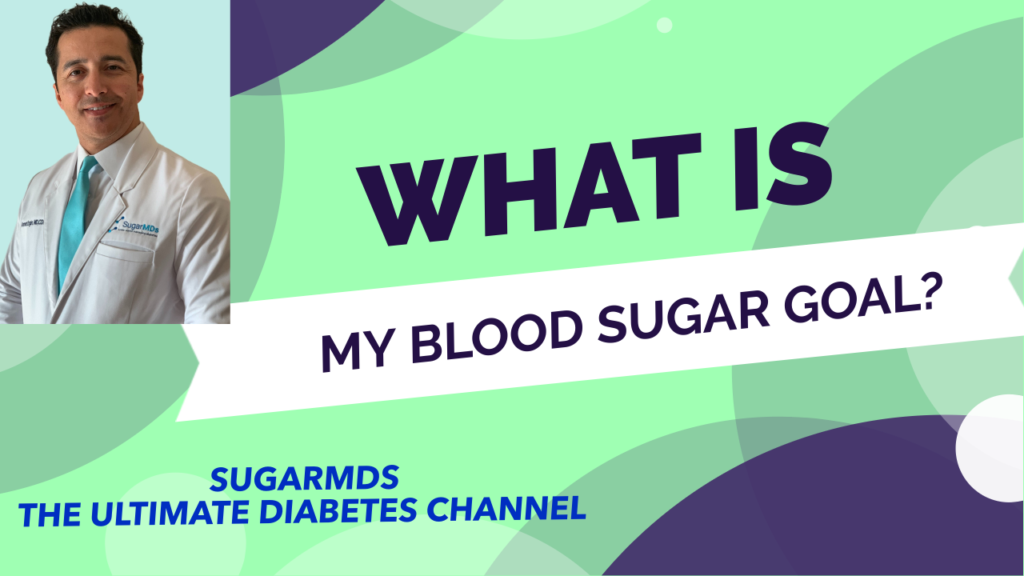DISCOUNT: UP TO 90% OFF






What is normal blood sugar level for diabetics? Find out now!


Table of Contents
- Normal and diabetic blood sugar ranges
- What is normal fasting blood sugar?
- What’s normal blood sugar after eating?
- What is a normal blood sugar level after eating for diabetics?
- What is normal or goal HbA1c?
- What are the A1c goals for patients with diabetes?
- Can I test and diagnose myself with diabetes via fingerstick?
- When should you be screened for diabetes if you think that you are at risk?
- About the Author
Normal and diabetic blood sugar ranges
Normal blood sugar levels for patients without diabetes vs normal blood sugars for patients with diabetes are totally different. “Normal” blood sugars for diabetic and non-diabetic patient will be totally different. The same thing applies to normal or target/goal A1c levels. Even within the diabetic population, A1c goals will have to be individualized.What is normal fasting blood sugar?
What I mean by that is that the fasting blood sugar target will need to be individualized for certain people based on such factors. These factors are the duration of diabetes, age and life expectancy, cardiovascular risk, chronic conditions such as chronic kidney disease or liver disease, and risk of low blood sugars as well as cognitive status.
Your endocrinologist will give you a personalized goal to prevent diabetes complications while keeping your blood sugar in a safe range. Your normal blood sugar may not be the same as other people's.
What’s normal blood sugar after eating?
Normal blood sugar level after eating is lower than 140 mg/dl in normal non-diabetic individuals. Blood sugar between 140 and 199 mg/dl is considered to be prediabetes, and blood sugar of 200 mg/dl suggests diabetes. The goal of blood sugar after meals for diabetic patients is less than 180 mg/dL in general.Although in my practice I recommend a blood sugar goal of fewer than 160 mg/d 2 hours after meals. If you can keep blood sugars after meals below 180 mg/dL you can achieve an A1c goal of 7% or less. If you can achieve a blood sugar goal of 160 2hours after meals you can achieve an A1c goal of 6.5% or less.
What is a normal blood sugar level after eating for diabetics?
The American Diabetes Association recommends that the blood sugar 1 to 2 hours after the beginning of a meal be less than 180 mg/dl for most nonpregnant adults with diabetes. This is typically the peak, or highest, the blood sugar level in someone with diabetes.Again, this target may need to be individualized for certain people based on such factors as the duration of diabetes, age and life expectancy, cognitive status, other health conditions, cardiovascular complications, and hypoglycemia unawareness. It’s important that people with diabetes discuss their target blood sugar goals with their healthcare provider.
What is normal or goal HbA1c?
There are a variety of different ways for this test which are HbA1C, A1C, glycated hemoglobin, glycosylated hemoglobin, etc. good thing about the A1c test is that patient does not need to fast before having their HbA1C test measured.
The HbA1C result is reported as a percentage. the higher the percentage, the higher the blood sugar level. For example, 7% A1c corresponds to 150 mg/dL of average blood sugars. Each 1% increase in A1c suggests a 30 mg/dL increase in average blood sugars.
A1c tests will tell your physician your average blood sugars which include all the high and low blood sugars. A1c is not the best test by any means because it does not tell us anything about blood sugar excursions. Moreover, the A1C test may not be always accurate for some people, including those with hemoglobin problems such as thalassemia or sickle cell anemia.
Some patients are under treatment for HIV, and people of African, Mediterranean, or Southeast Asian descent sometimes may have genetically abnormal A1c. In addition to being a tool for diagnosing diabetes, we use the HbA1C test to manage people who have diabetes. A1c is 1 of the many tools we use to take care of patients with diabetes.
What are the A1c goals for patients with diabetes?
Like, many major guidelines we also agreed that an HbA1C of less than 7% for most nonpregnant adults with diabetes is a general goal. A lower goal, such as less than 6.5% or even 6%, may be appropriate for some people.Lower A1c goal is for those who had a shorter amount of time with diabetes, for younger people, for those without heart disease, and/or for those with type 2 diabetes treated with lifestyle or metformin only. A higher HbA1C goal, like above 8%, may be better for people with a history of frequent or severe hypoglycemia or a limited life expectancy.
Other reasons for higher A1c goals are advanced diabetes complications, multiple other illnesses, or for those, a lower HbA1C goal is difficult to achieve safely. It’s important that people with diabetes discuss their target blood sugar goals with their endocrinologist.
Can I test and diagnose myself with diabetes via fingerstick?
The fasting blood sugar, 2-hour post-meal blood sugar, and HbA1C tests are important ways to screen and diagnose diabetes. But, If you think you have diabetes and do not have a normal blood sugar level, it’s important to not diagnose yourself by doing a fingerstick with a home blood glucose meter. There are standards that laboratories use for diagnosing diabetes.Therefore, you should ask your doctor’s office to test you at a laboratory. It’s also important to talk with your diabetes doctor to make sure you know how often you should check blood sugars such as fasting blood sugar or HbA1C test. Also, know what your results mean and what your blood sugar and HbA1C targets are.
If you have not been previously diagnosed with diabetes or prediabetes or insulin resistance and your results are above “normal,” your diabetes doctor may recommend other tests. Treatment may include lifestyle changes, such as weight loss, a healthy diabetic eating plan, and regular exercise.
You may need to start taking diabetes medications, supplements such as sugarmd supplements including insulin although that is the final choice in most cases. If you are diagnosed with diabetes, Dr. Ahmet Ergin recommends that we teach you how to check your blood sugars with a meter or a CGM such as Dexcom or libre.
When should you be screened for diabetes if you think that you are at risk?
At SugarMDs, we agree with the American Diabetes Association's recommendation for routine screening for type 2 diabetes starting at age 45. If the blood sugar level and or A1c are normal, the screening should be repeated every 3 years.On the other hand, if the patient has diabetes risk factors screening should be done earlier than age 45. Risk factors include having a history of gestational diabetes, being overweight or obese, having a family history of type 2 diabetes, or being of a certain race/ethnicity (African American, Latino, Asian American, Pacific Islander, or Native American) We also screen children and adolescents who have diabetes symptoms or who are overweight.
We also screen children who have a family history of type 2 diabetes, are African American, Latino, Asian American, etc that are high-risk ethnic groups. Some of these kids will have signs of prediabetes (acanthosis nigricans, high blood pressure, high cholesterol).
Another important risk factor is a mother who had gestational diabetes. We will also test children of those monitors at the early signs or symptoms of diabetes or beginning at age 10 and then every 3 years thereafter. Thank you for reading this article about what is my blood sugar goal.
About the Author
Dr. Ahmet Ergin is the author of The Ultimate Diabetes Book and the Founder of the SugarMD youtube channel. He practices in Port Saint Lucie, FL as an endocrinologist physician.
Follow us @ www.sugarmds.com Facebook
Written By Dr. Ahmet Ergin
461 total articles
Meet Dr. Ahmet Ergin, a highly skilled and dedicated endocrinologist with a passion for diabetes care. Dr. Ergin earned his medical degree with honors from Marmara University in Istanbul. He completed internal medicine residency and endocrinology fellowship at Cleveland Clinic. Dr. Ergin is board-certified in Internal Medicine, Endocrinology, Diabetes, and Metabolism due to his vast medical expertise. He's a certified diabetes educator, author of “The Ultimate Diabetes Book,” and founder of “the SugarMD YouTube channel.” Dr. Ergin offers exceptional diabetes care to his patients in Port Saint Lucie, FL, helping them manage effectively. For a closer look into his insights and experiences, connect with Dr. Ahmet Ergin on LinkedIn, Instagram, and YouTube.”
Disclaimer: These statements have not been evaluated by the Food and Drug Administration. Information on this website isn't intended to treat, cure or prevent any disease. Discuss with your doctor and do not self-treat.
Products













